NEW

Overview of Ultrasonic Receivers and TransmittersUltrasonic receivers and transmitters, such as the CFR-25JB-52-12R, are pivotal in harnessing ultrasonic technology for a wide range of applications. These devices operate by emitting ultrasonic waves and capturing the echoes that return from nearby objects, enabling functionalities such as distance measurement, object detection, and environmental monitoring. Below, we delve into the core functional technologies and notable application development cases that highlight the effectiveness of ultrasonic receivers and transmitters.
Core Functional Technologies1. Ultrasonic Wave Generation and Reception2. Signal Processing3. Modulation Techniques4. Integration with Microcontrollers5. Distance Measurement and Object Detection1. Industrial Automation2. Robotics3. Healthcare4. Smart Home Applications5. Environmental Monitoring6. Agriculture Application Development Cases ConclusionUltrasonic receivers and transmitters, such as the CFR-25JB-52-12R, are vital components in various industries, providing reliable distance measurement and object detection capabilities. Their integration with modern technologies, including microcontrollers and IoT systems, paves the way for innovative applications across diverse sectors. As technology continues to evolve, the potential for ultrasonic devices expands, solidifying their role in the development of smart systems and automation solutions. The versatility and effectiveness of ultrasonic technology make it an essential tool for enhancing operational efficiency and safety in numerous applications.
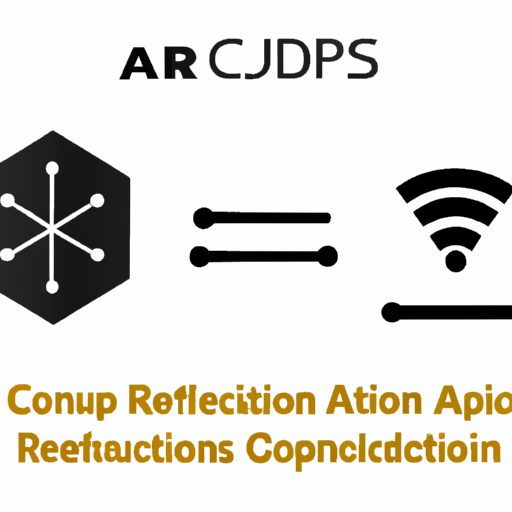
Application Development in Current Sensors for CFR-25JB-52-12K: Key Technologies and Success StoriesThe CFR-25JB-52-12K is a precision resistor often utilized in current sensing applications. While it is not a current sensor by itself, it plays a vital role in current sensing circuits. Current sensors are essential in various sectors, including automotive, industrial automation, renewable energy, and consumer electronics. Below, we explore key technologies in current sensing and highlight notable success stories.
Key Technologies in Current Sensors1. Shunt Resistors2. Hall Effect Sensors3. Rogowski Coils4. Current Transformers (CTs)5. Integrated Current Sensors6. Smart Sensors1. Electric Vehicles (EVs)2. Renewable Energy Systems3. Industrial Automation4. Consumer Electronics5. Medical Devices Success Stories ConclusionThe evolution of current sensors has been propelled by technological advancements, resulting in more accurate, reliable, and compact solutions. The integration of current sensors into diverse applications has led to improved efficiency, safety, and performance across multiple industries. As technology continues to advance, we can anticipate further innovations in current sensing solutions, particularly with the rise of IoT and smart technologies. The CFR-25JB-52-12K, as a key component in these systems, exemplifies the critical role of precision resistors in modern current sensing applications.
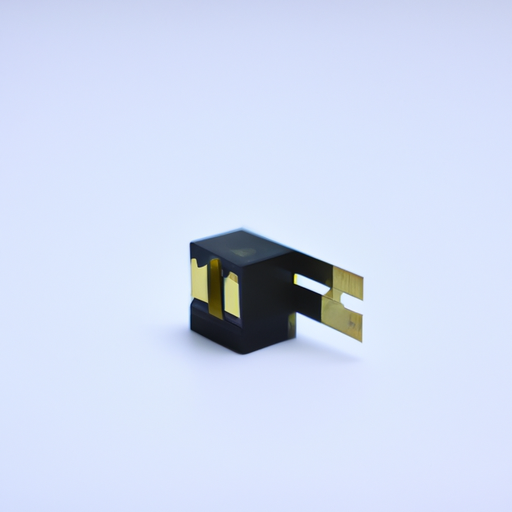
Overview of CFR-50JB-52-12K Proximity SensorsThe CFR-50JB-52-12K is a specific model of proximity sensor that exemplifies the core functionalities and applications of proximity sensing technology. This sensor is designed to detect the presence or absence of objects without physical contact, making it a vital component in various automation and control systems. Below, we delve deeper into the core functional technologies, relevant articles, and application development cases that highlight the effectiveness of proximity sensors like the CFR-50JB-52-12K.
Core Functional Technologies1. Inductive Proximity Sensors2. Capacitive Proximity Sensors3. Photoelectric Sensors4. Ultrasonic Proximity Sensors5. Magnetic Proximity Sensors1. Automated Manufacturing2. Smart Agriculture3. Robotics and Automation4. Safety Systems5. Smart Home Applications Application Development Cases ConclusionProximity sensors, including the CFR-50JB-52-12K, are integral to modern automation and control systems. Their non-contact detection capabilities make them versatile tools across various industries, enhancing efficiency, safety, and productivity. As technology continues to evolve, the integration of proximity sensors with IoT and smart systems will further expand their applications, paving the way for innovative solutions in automation and control. The ongoing development and deployment of these sensors will undoubtedly play a crucial role in shaping the future of industrial and consumer applications alike.
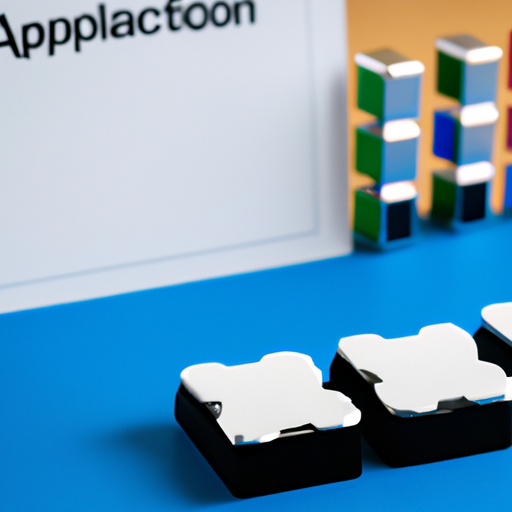
Application Development in Tilt Switches for CFR-50JB-52-12R: Key Technologies and Success StoriesTilt switches, such as the CFR-50JB-52-12R, play a crucial role in various applications, particularly in safety and automation systems. These devices detect changes in orientation and can trigger actions based on the tilt angle. Below is an overview of key technologies and success stories related to the application development of tilt switches like the CFR-50JB-52-12R.
Key Technologies1. Microelectromechanical Systems (MEMS)2. Analog and Digital Signal Processing3. Wireless Communication4. Low Power Consumption5. Robust Housing and Environmental Protection6. Integration with Other Sensors1. Automotive Safety Systems2. Consumer Electronics3. Industrial Automation4. Smart Home Devices5. Robotics6. Medical Devices Success Stories ConclusionThe CFR-50JB-52-12R tilt switch exemplifies advancements in tilt switch technology and its diverse applications across various industries. By leveraging modern technologies such as MEMS, wireless communication, and robust design, developers can create innovative solutions that enhance safety, efficiency, and user experience. The success stories highlight the versatility and importance of tilt switches in today's technology landscape, paving the way for future developments in this field. As industries continue to evolve, the role of tilt switches will likely expand, leading to new applications and improved safety measures across various sectors.
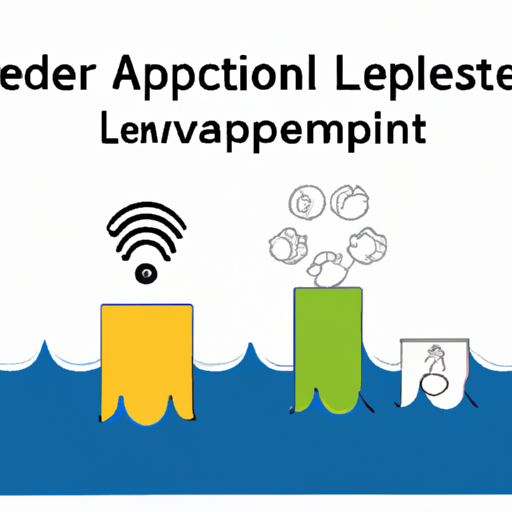
Application Development in Float Level Sensors: 2474-14L ModelFloat level sensors, particularly the 2474-14L model, are integral to various industries for accurately measuring liquid levels in tanks, reservoirs, and other containers. These sensors leverage the buoyancy principle, translating the float's position into electrical signals for monitoring and control. Below, we delve into the key technologies that underpin these sensors and highlight notable success stories that illustrate their impact across different sectors.
Key Technologies1. Buoyancy Principle: The core operating principle of float level sensors is buoyancy. As the liquid level changes, the float moves accordingly, and its position is converted into an electrical signal, enabling precise level measurement. 2. Magnetic Reed Switches: Many float sensors incorporate magnetic reed switches, which are triggered by the float's movement. When the float reaches a predetermined level, it activates or deactivates the switch, sending a signal to the control system.
3. Analog and Digital Outputs: Float level sensors can provide both analog outputs (e.g., 4-20 mA) for continuous monitoring and digital outputs (e.g., Modbus, RS485) for integration with modern control and data acquisition systems.
4. Non-contact Measurement Technologies: Advanced float sensors may utilize non-contact measurement methods, such as ultrasonic or radar technologies, to gauge liquid levels without direct contact. This feature enhances reliability and reduces maintenance needs.
5. Environmental Resistance: Designed to endure harsh conditions, float level sensors are often constructed from materials that resist extreme temperatures, corrosive substances, and high pressures, making them suitable for diverse industrial applications.
6. Wireless Communication: The advent of wireless float level sensors allows for remote monitoring and data transmission to central systems, facilitating real-time oversight and control without the need for extensive wiring.
Success Stories1. Water Treatment Facilities: Float level sensors have been effectively deployed in water treatment plants to monitor water levels in various tanks. By providing real-time data, these sensors enhance the treatment process, ensuring compliance with environmental regulations and optimizing resource use.
2. Oil and Gas Industry: In the oil and gas sector, float level sensors are critical for monitoring liquid levels in storage tanks. Their accurate readings help prevent overflows and ensure safe operations, contributing to environmental protection and operational efficiency.
3. Food and Beverage Industry: The food and beverage sector relies on float level sensors for monitoring liquid levels in tanks and silos. Their hygienic design and reliability ensure smooth production processes while adhering to safety standards.
4. Chemical Processing: Float level sensors are essential in chemical processing plants for monitoring corrosive liquids. Their robust construction and chemical resistance help maintain safety and efficiency in handling hazardous materials.
5. Agricultural Applications: In agriculture, float level sensors are used to monitor water levels in irrigation systems and storage tanks. This application optimizes water usage, leading to improved crop yields and resource management.
6. HVAC Systems: In heating, ventilation, and air conditioning (HVAC) systems, float level sensors monitor condensate levels in drain pans. This prevents overflow and potential water damage, ensuring efficient system operation.
ConclusionFloat level sensors, such as the 2474-14L model, are vital in various industries, providing reliable and accurate liquid level measurements. The development of these applications is supported by technological advancements, making them suitable for a wide range of environments and use cases. Success stories across different sectors underscore their importance in enhancing operational efficiency, safety, and regulatory compliance. As technology continues to evolve, the capabilities and applications of float level sensors are expected to expand, further solidifying their role in modern industrial processes.

Application Development in Vibration Sensors for CFR-25JB-52-120K: Key Technologies and Success StoriesDeveloping applications for vibration sensors, particularly for a specific model like the CFR-25JB-52-120K, involves understanding the key technologies and methodologies that can enhance their performance and utility. Here’s an overview of the key technologies and some success stories in the application development of vibration sensors.
Key Technologies1. Sensor Technology2. Data Acquisition Systems3. Wireless Communication4. Data Analytics and Machine Learning5. User Interface and Visualization1. Industrial Equipment Monitoring2. HVAC Systems3. Automotive Industry4. Aerospace Applications5. Smart Buildings Success Stories ConclusionThe application development for vibration sensors like the CFR-25JB-52-120K leverages advanced technologies in sensor design, data acquisition, communication, and analytics. Success stories across various industries highlight the potential of these sensors in enhancing operational efficiency, reducing costs, and improving safety. As technology continues to evolve, the integration of AI and machine learning will further enhance the capabilities of vibration sensors, paving the way for more innovative applications. The ongoing advancements in sensor technology and data analytics will continue to drive the adoption of vibration sensors in diverse fields, ensuring their relevance and utility in the future.
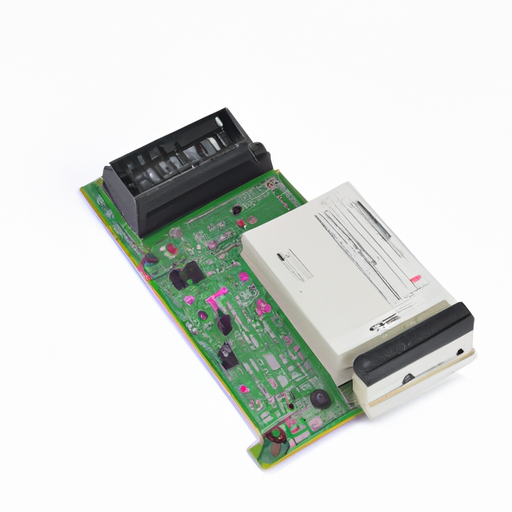
Overview of CFR-50JB-52-120K: Analog and Digital Output TechnologiesThe CFR-50JB-52-120K is a sensor or device that likely incorporates both analog and digital output capabilities, making it versatile for various applications. Understanding the core functional technologies behind these outputs is essential for effective application development.
Core Functional Technologies 1. Analog Output
- **Definition:** Analog output provides a continuous signal that varies in proportion to the physical quantity being measured. Common formats include voltage (0-10V) and current (4-20mA).
- **Technology:** Analog outputs are generated by transducers that convert physical phenomena (e.g., temperature, pressure, light) into electrical signals. These signals can be easily interpreted by analog devices or systems.
- **Applications:**
- **Industrial Automation:** Continuous monitoring of processes.
- **HVAC Systems:** Real-time temperature and humidity control.
- **Process Control:** Feedback loops for maintaining system stability. 2. Digital Output
- **Definition:** Digital output represents data in discrete binary form (0s and 1s). It can utilize various communication protocols such as I2C, SPI, and UART.
- **Technology:** Digital outputs are produced by microcontrollers or digital sensors that process and communicate data in a format suitable for digital systems. This allows for more complex data handling and integration with modern computing systems.
- **Applications:**
- **IoT Devices:** Reliable data transmission with noise immunity.
- **Communication Systems:** Efficient data exchange between devices.
- **Smart Devices:** Integration with cloud services for data analytics. Application Development Cases 1. Industrial Automation
- **Scenario:** A manufacturing facility employs the CFR-50JB-52-120K to monitor machinery.
- **Implementation:**
- **Analog Output:** Continuous temperature and pressure readings ensure optimal operating conditions.
- **Digital Output:** Alerts for anomalies are sent to a central monitoring system, enabling quick responses to potential issues. This dual output enhances operational efficiency and reduces downtime. 2. Environmental Monitoring
- **Scenario:** A smart city initiative uses the CFR-50JB-52-120K for air quality monitoring.
- **Implementation:**
- **Analog Output:** Gas sensors provide real-time pollutant levels.
- **Digital Output:** Weather stations relay data to a central system for analysis, allowing for timely public health alerts and policy adjustments based on environmental data. 3. Healthcare Devices
- **Scenario:** A wearable health monitor utilizes the CFR-50JB-52-120K to track vital signs.
- **Implementation:**
- **Analog Output:** Continuous heart rate data is monitored for irregularities.
- **Digital Output:** Movement data from accelerometers is processed to detect activity levels, enabling comprehensive health tracking and alerts for medical professionals. 4. Smart Home Systems
- **Scenario:** A smart thermostat integrates the CFR-50JB-52-120K for energy management.
- **Implementation:**
- **Analog Output:** Real-time temperature data adjusts heating and cooling systems.
- **Digital Output:** Communication with smart home hubs allows for user control and automation, optimizing energy usage and enhancing user comfort. 5. Robotics
- **Scenario:** A robotic arm employs the CFR-50JB-52-120K for precise movement.
- **Implementation:**
- **Analog Output:** Continuous feedback from position sensors ensures accurate arm positioning.
- **Digital Output:** Discrete data from encoders informs the control system, allowing for high precision in robotic tasks and movements. ConclusionThe CFR-50JB-52-120K exemplifies the integration of analog and digital output technologies, enhancing its functionality across diverse applications. By leveraging the strengths of both output types, developers can create robust, efficient, and responsive systems. As technology advances, the combination of analog and digital outputs will continue to be pivotal in the development of innovative solutions in automation, healthcare, environmental monitoring, and beyond. This dual capability not only improves performance but also facilitates the creation of smarter, more interconnected systems.
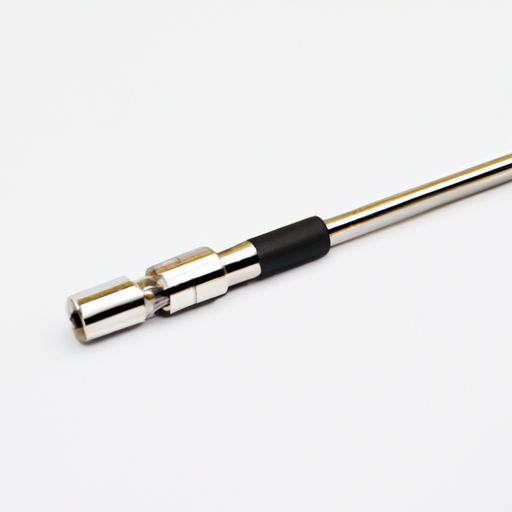
Overview of Thermocouples and Temperature ProbesThermocouples are essential temperature sensors that leverage the Seebeck effect, generating a voltage when two dissimilar metals are joined and exposed to a temperature gradient. Temperature probes, which often incorporate thermocouples, are vital in numerous industries for precise temperature monitoring and control.
Core Functional Technology1. Seebeck Effect: The core principle of thermocouples, where a voltage is generated at the junction of two different metals due to a temperature difference, allowing for temperature measurement. 2. Types of Thermocouples3. Construction: Thermocouples consist of two wires made from different metals joined at one end (the sensing junction), while the other ends connect to a measurement device (the reference junction).
4. Signal Processing: The small voltage generated by the thermocouple requires amplification and conversion to a readable temperature format, typically using a thermocouple amplifier or a data acquisition system.
5. Calibration: Accurate temperature readings necessitate calibration against known temperature standards, which can be achieved using ice points or fixed-point calibrators.
Applications of Thermocouples and Temperature Probes1. Industrial Processes: Thermocouples are integral in manufacturing processes such as metal forging, glass production, and chemical processing, where precise temperature control is crucial.
2. HVAC Systems: They are used in heating, ventilation, and air conditioning systems to monitor and optimize performance and energy efficiency.
3. Food and Beverage Industry: Critical for monitoring cooking, pasteurization, and storage temperatures to ensure food safety and quality.
4. Automotive Testing: Employed in engine testing and exhaust systems to monitor temperatures, aiding in performance optimization and emissions control.
5. Medical Applications: Utilized in medical devices for monitoring patient temperatures, particularly in critical care settings.
6. Research and Development: Essential in laboratories for experiments requiring precise temperature measurements, such as in material science and physics.
Case Studies1. Food Safety Monitoring: A food processing plant implemented Type K thermocouples to monitor cooking temperatures of meat products. By integrating these sensors with a data logging system, they ensured compliance with food safety regulations, significantly reducing the risk of foodborne illnesses.
2. Automotive Engine Testing: An automotive manufacturer employed thermocouples in their engine testing facilities to monitor exhaust temperatures. This data facilitated the optimization of engine performance and emissions, leading to the development of more efficient engines.
3. Pharmaceutical Manufacturing: A pharmaceutical company utilized thermocouples in their production processes to monitor the temperature of bioreactors. This ensured optimal conditions for microbial growth, resulting in higher yields of the desired product.
4. HVAC System Optimization: An HVAC company integrated thermocouples into their systems to monitor air and surface temperatures. This data was leveraged to optimize energy consumption and improve system efficiency, yielding significant cost savings for clients.
ConclusionThermocouples and temperature probes are indispensable in various industries, providing critical temperature measurements that ensure safety, efficiency, and compliance. Their versatility and reliability make them a preferred choice for temperature sensing applications across diverse fields. As technology advances, the integration of thermocouples with IoT and data analytics will further enhance their effectiveness in real-time monitoring and control systems, paving the way for smarter industrial processes and improved operational efficiencies.

Application Development in Pressure Sensors and Transducers: CFR-50JB-52-11KThe development of applications for pressure sensors and transducers, such as the CFR-50JB-52-11K, is a dynamic field that integrates cutting-edge technologies to enhance performance across various industries. Below, we delve deeper into the key technologies and notable success stories that illustrate the impact of these devices.
Key Technologies1. MEMS Technology2. Digital Signal Processing (DSP)3. Wireless Communication4. Smart Sensors5. Calibration and Compensation Algorithms6. Robust Materials and Design1. Automotive Industry2. Medical Devices3. Industrial Automation4. Environmental Monitoring5. Aerospace Applications Success Stories ConclusionThe development of applications for pressure sensors and transducers like the CFR-50JB-52-11K is a testament to the advancements in technology and innovation across various sectors. By harnessing MEMS technology, digital signal processing, wireless communication, and smart sensor capabilities, industries can create reliable and efficient pressure measurement solutions tailored to their specific needs. The success stories across automotive, medical, industrial, environmental, and aerospace sectors underscore the critical role of pressure sensors in enhancing safety, efficiency, and operational effectiveness in modern technology. As these technologies continue to evolve, the potential for new applications and improvements in existing systems will only expand, driving further innovation in the field.

Application Development in Sensor and Transducer Accessories for CFR-50JB-52-11R: Key Technologies and Success StoriesDeveloping applications for sensors and transducer accessories, such as the CFR-50JB-52-11R, involves leveraging a variety of key technologies and methodologies that enhance their functionality and integration into diverse systems. Below is an overview of these technologies and notable success stories that illustrate their impact.
Key Technologies1. Microcontroller Integration2. Wireless Communication3. Data Analytics and Machine Learning4. IoT Platforms5. Energy Harvesting6. Edge Computing1. Smart Agriculture2. Predictive Maintenance in Manufacturing3. Smart Cities4. Healthcare Monitoring5. Energy Management Success Stories ConclusionThe development of applications for sensors and transducer accessories like the CFR-50JB-52-11R is propelled by advancements in microcontrollers, wireless communication, data analytics, and IoT technologies. The success stories across various industries highlight the transformative potential of these technologies, leading to enhanced efficiency, cost savings, and improved decision-making capabilities. As technology continues to evolve, the opportunities for innovative applications in this field will expand, paving the way for smarter, more connected systems.
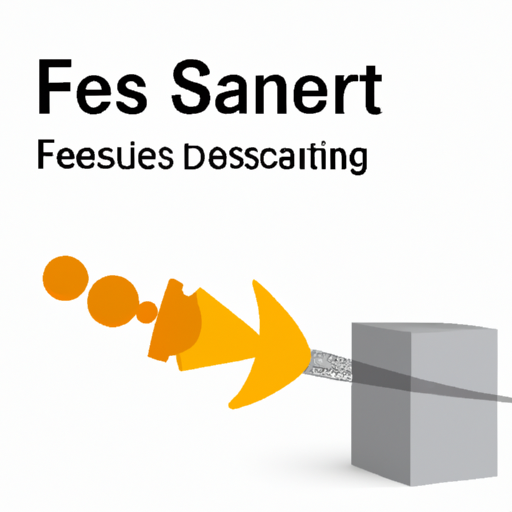
ECS-F1VE155K Particle and Dust Sensors: Core Functional Technologies and Application Development CasesThe ECS-F1VE155K is a sophisticated particle and dust sensor that leverages cutting-edge technology to accurately detect and quantify particulate matter in the air. This sensor is pivotal for a variety of applications, including air quality monitoring, industrial safety, and environmental research. Below, we delve into the core functional technologies and notable application development cases associated with the ECS-F1VE155K.
Core Functional Technologies1. Laser Scattering Technology2. Real-Time Monitoring3. Multi-Particle Detection4. Compact Design5. Digital Output6. Calibration and Accuracy1. Indoor Air Quality Monitoring2. Industrial Dust Monitoring3. Smart Cities4. Environmental Research5. Agricultural Applications6. Consumer Electronics Application Development Cases ConclusionThe ECS-F1VE155K particle and dust sensor exemplifies a significant advancement in air quality monitoring technology. Its core functionalities, including laser scattering detection, real-time monitoring, and compact design, make it suitable for a diverse array of applications. From enhancing indoor air quality to supporting smart city initiatives, the potential applications of this technology are extensive and impactful. As public awareness of air quality issues continues to rise, the demand for effective particle and dust sensors is expected to grow, driving further innovation in this critical field.
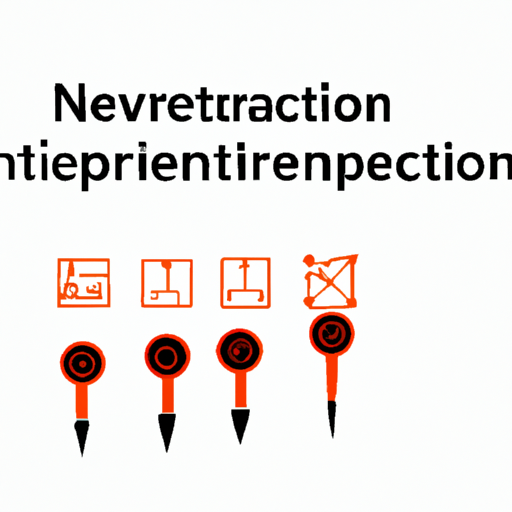
Application Development in NTC Thermistors for IRF510: Key Technologies and Success StoriesNTC (Negative Temperature Coefficient) thermistors are essential components in temperature sensing and control applications. Their ability to decrease resistance with increasing temperature makes them ideal for various applications, particularly in conjunction with power electronics like the IRF510, a widely used N-channel MOSFET. This document explores the key technologies and success stories associated with the application development of NTC thermistors in relation to the IRF510.
Key Technologies1. Temperature Sensing and Compensation2. Closed-Loop Control Systems3. Thermal Protection Circuits4. Data Acquisition Systems5. Smart Home and IoT Applications1. Consumer Electronics2. Automotive Applications3. Industrial Automation4. Renewable Energy Systems5. Medical Devices Success Stories ConclusionThe integration of NTC thermistors with components like the IRF510 has led to significant advancements across various fields, including consumer electronics, automotive, industrial automation, renewable energy, and medical devices. By leveraging the unique properties of NTC thermistors, developers can create more efficient, reliable, and safe systems that dynamically respond to temperature changes. As technology continues to evolve, the applications and success stories surrounding NTC thermistors and MOSFETs like the IRF510 are likely to expand further, paving the way for innovative solutions in temperature management and control.
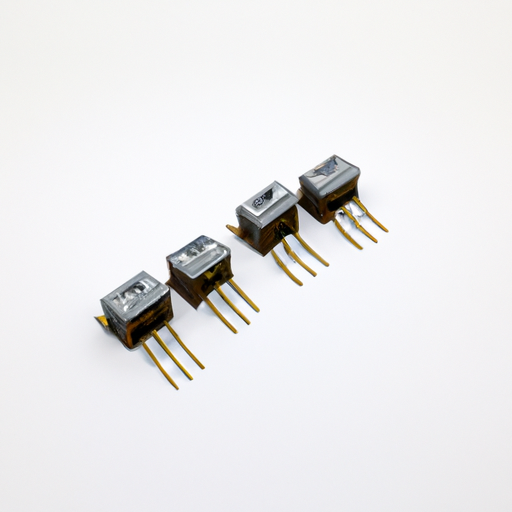
Overview of Bridge RectifiersBridge rectifiers are fundamental components in power electronics, serving the crucial function of converting alternating current (AC) to direct current (DC). The CFR-50JB-52-110K is a specific model of a bridge rectifier that is widely utilized across various applications due to its efficiency, reliability, and robust design.
Core Functional Technology1. Basic Operation2. Key Specifications3. Efficiency1. Power Supply Units (PSUs)2. Battery Chargers3. LED Drivers4. Industrial Equipment5. Renewable Energy Systems Application Development Cases ConclusionThe CFR-50JB-52-110K bridge rectifier exemplifies the critical role of bridge rectifiers in modern electronic applications. Its ability to efficiently convert AC to DC makes it indispensable in power supply units, battery chargers, LED drivers, industrial equipment, and renewable energy systems. By understanding the core functional technology and application development cases of bridge rectifiers, engineers and designers can optimize their designs for improved performance, reliability, and energy efficiency. This knowledge is essential for advancing technology in various sectors, from consumer electronics to industrial automation and renewable energy solutions.
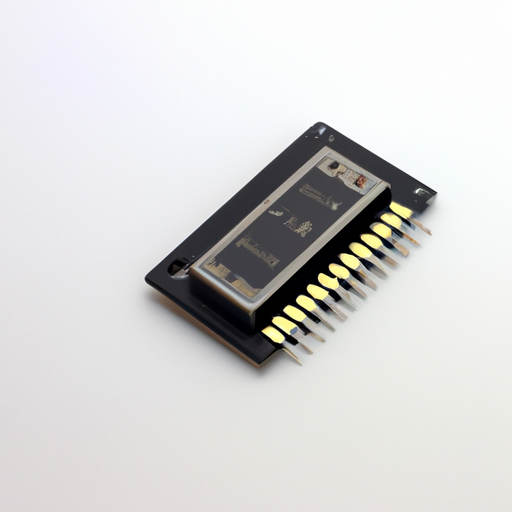
Overview of CFR-50JB-52-110R IGBT ModulesThe CFR-50JB-52-110R IGBT module represents a significant advancement in power electronics, particularly in applications that demand high efficiency and reliability. This module is designed to meet the rigorous demands of modern power conversion systems, making it suitable for a variety of applications, including renewable energy, electric vehicles, industrial drives, HVAC systems, and power supply systems.
Core Functional Technologies of IGBT Modules1. High Efficiency and Low Switching Losses2. Thermal Management3. Integrated Protection Features4. Modular Design5. Gate Drive Technology1. Renewable Energy Systems2. Electric Vehicles (EVs)3. Industrial Drives4. HVAC Systems5. Power Supply Systems Application Development Cases ConclusionThe CFR-50JB-52-110R IGBT module exemplifies the latest advancements in IGBT technology, offering high efficiency, effective thermal management, and integrated protection features. Its versatility across various applications—from renewable energy systems to electric vehicles and industrial drives—demonstrates its critical role in modern power electronics. As the demand for efficient and reliable power conversion solutions continues to grow, IGBT modules like the CFR-50JB-52-110R will remain essential in driving innovation and sustainability in the power electronics industry.
基本
文件
流程
错误
SQL
调试
- 请求信息 : 2025-07-15 03:42:12 HTTP/1.1 GET : http://mm-chips.com/en/news
- 运行时间 : 0.098961s [ 吞吐率:10.11req/s ] 内存消耗:1,384.52kb 文件加载:201
- 查询信息 : 0 queries
- 缓存信息 : 2 reads,0 writes
- 会话信息 : SESSION_ID=18f9905987e5a395062f1a52822886d5
- CONNECT:[ UseTime:0.001440s ] mysql:host=127.0.0.1;port=3306;dbname=mm_chips_com;charset=utf8mb4
- SHOW FULL COLUMNS FROM `moban_site` [ RunTime:0.004382s ]
- SELECT * FROM `moban_site` WHERE `lang` = 'en' LIMIT 1 [ RunTime:0.001928s ]
- SHOW FULL COLUMNS FROM `moban_columns` [ RunTime:0.003693s ]
- SELECT * FROM `moban_columns` WHERE `state` = 1 AND `lang` = 'en' ORDER BY `sort` ASC [ RunTime:0.001560s ]
- SHOW FULL COLUMNS FROM `moban_news` [ RunTime:0.003380s ]
- SELECT * FROM `moban_news` WHERE `lang` = 'en' AND `state` = 1 LIMIT 1 [ RunTime:0.001360s ]
- SHOW FULL COLUMNS FROM `moban_news_category` [ RunTime:0.003258s ]
- SELECT * FROM `moban_news_category` WHERE `lang` = 'en' ORDER BY `id` ASC [ RunTime:0.001627s ]
- SHOW FULL COLUMNS FROM `moban_single_page` [ RunTime:0.004440s ]
- SELECT * FROM `moban_single_page` WHERE `id` IN (0,28,34,73) AND `state` = 1 AND `lang` = 'en' [ RunTime:0.001454s ]
- SELECT * FROM `moban_single_page` WHERE `id` IN (0,2,68) AND `state` = 1 AND `lang` = 'en' [ RunTime:0.000952s ]
- SHOW FULL COLUMNS FROM `moban_link` [ RunTime:0.001897s ]
- SELECT * FROM `moban_link` WHERE `state` = 1 ORDER BY `sort` ASC [ RunTime:0.000772s ]
- SELECT COUNT(*) AS think_count FROM `moban_news` WHERE `state` = 1 AND `lang` = 'en' AND `is_draft` = 0 LIMIT 1 [ RunTime:0.002386s ]
- SELECT * FROM `moban_news` WHERE `state` = 1 AND `lang` = 'en' AND `is_draft` = 0 ORDER BY `sort` DESC,`id` DESC LIMIT 0,25 [ RunTime:0.006928s ]
- SELECT * FROM `moban_columns` WHERE `lang` = 'en' AND `link` = '/news' LIMIT 1 [ RunTime:0.001388s ]

0.112103s
